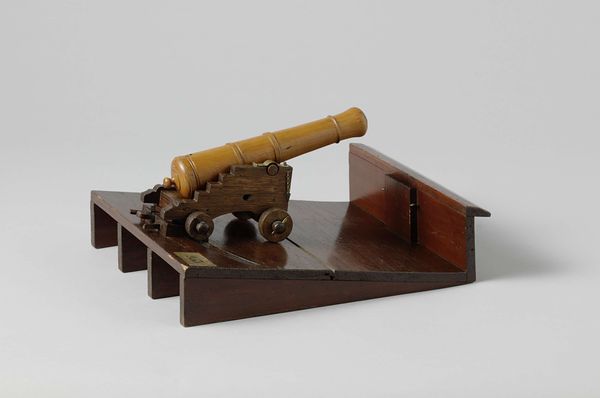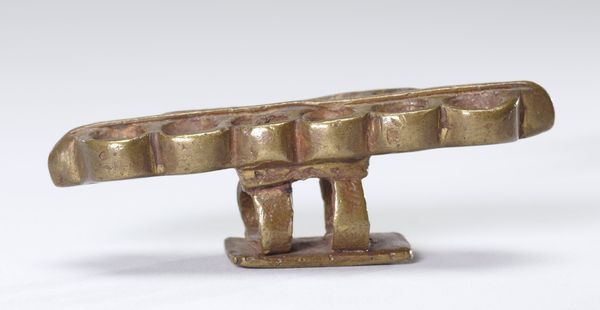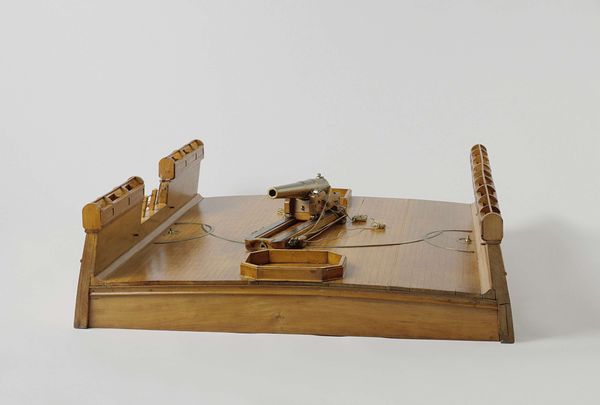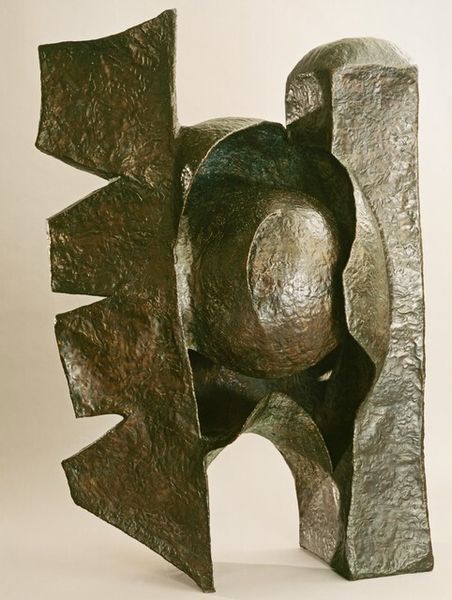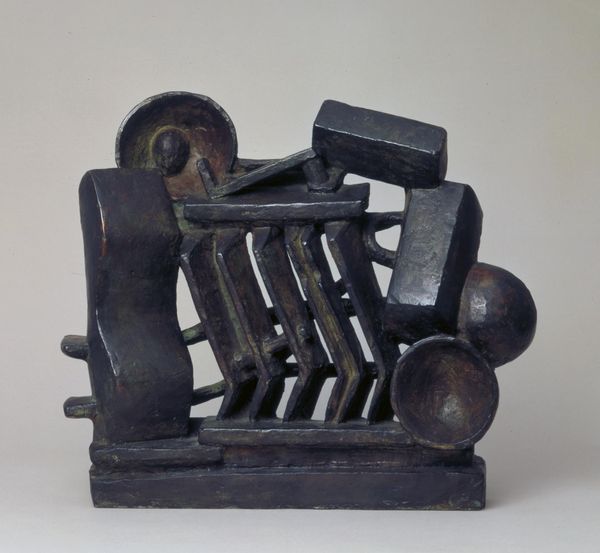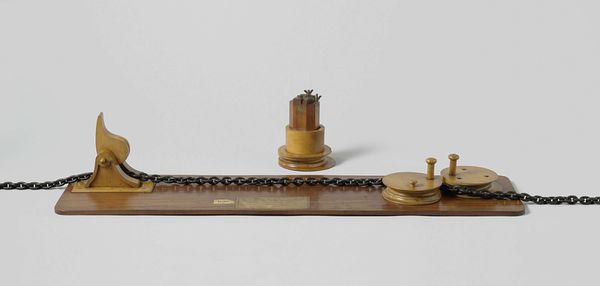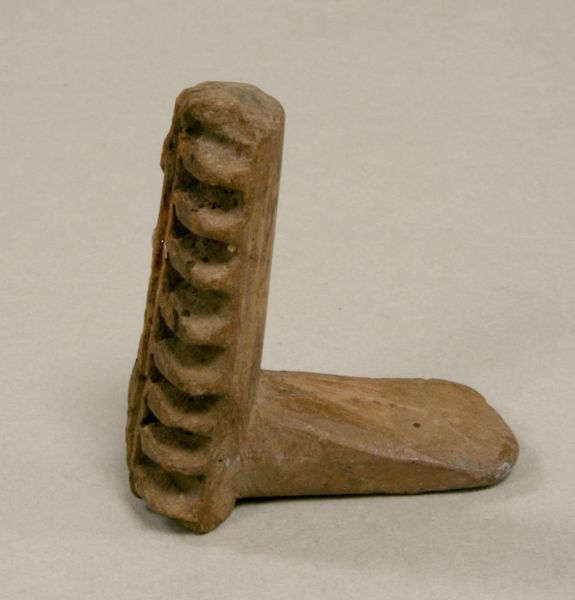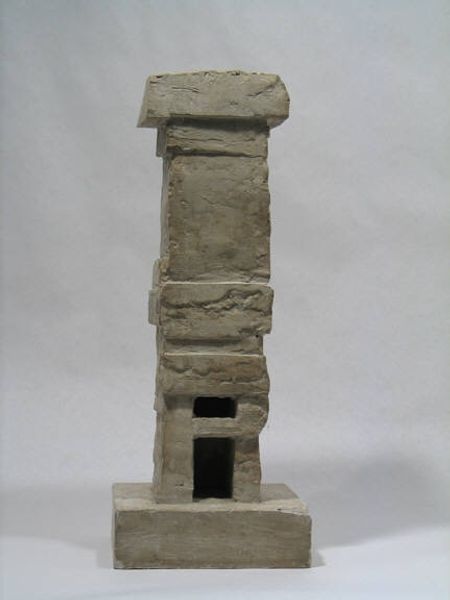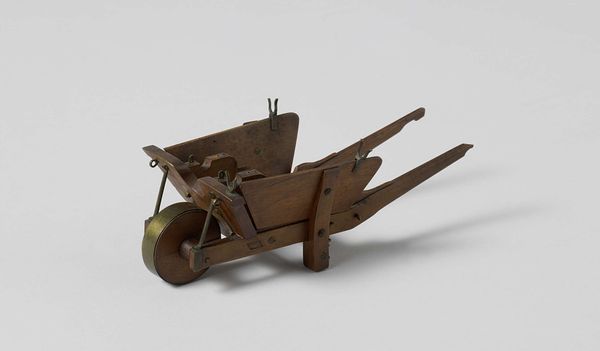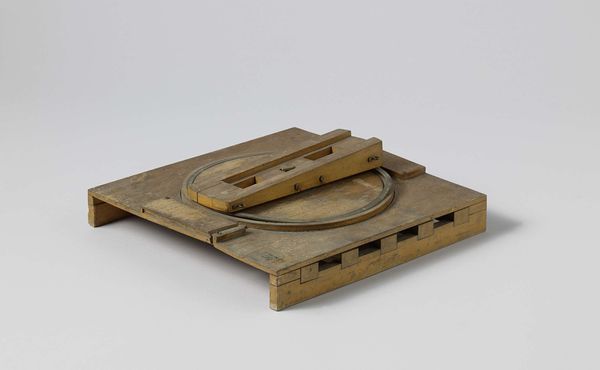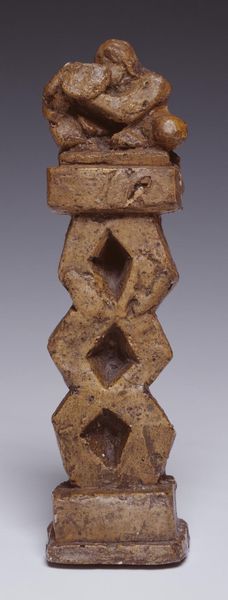
mixed-media, sculpture, wood
#
cubism
#
mixed-media
#
sculpture
#
geometric
#
sculpture
#
abstraction
#
wood
Dimensions: 25.5 x 48 cm
Copyright: Public domain US
Curator: Oh, there's such a quietness here, almost reverent. This assemblage—Pablo Picasso's "Still Life" from 1914—it whispers secrets, doesn't it? Editor: Well, it's certainly constructed. The wooden pieces, that trim, the tassles… I mean, is it still life, or a constructed commentary on domesticity? Curator: I feel a longing in those geometric shapes, a deconstructed memory of warmth. Notice the muted palette—whites, browns, creams—it almost fades into the background. I sense Picasso intentionally obscured easy readings. Editor: See, I think it’s all about bringing working-class aesthetics into high art. The raw, almost unfinished quality of the wood—you can practically smell the sawdust. Forget academic paintings! This challenges established production of value. Curator: But even with these base materials, isn't there still a refinement? The placement of the tassles, like droplets clinging to the edge of something vanished. Doesn’t the piece make you imagine a narrative that's just beyond our grasp? Editor: Mmm, maybe. But look how he juxtaposes high and low materials—gilded tassles on roughly hewn blocks of wood. The commentary on consumerism and art production seems unmistakable, critiquing luxury by grounding it in base material. Curator: Perhaps it is about consumption and materiality. But maybe also about the fragments that remain, after the feast, after the story has ended. Memory. This feels like memory assembled and made solid. It's not so much about seeing, I think, but about feeling. Editor: I see the argument, and memory plays a role. But those elements, that stark juxtaposition, speaks of accessibility and class in an unprecedented visual language for its time. Curator: Ultimately, Picasso encourages the eye, and the mind, to dance with absence. That's its unique achievement. Editor: And by forcing us to question art's purpose, production and definition, Picasso creates a profound legacy that still ripples.
Comments
No comments
Be the first to comment and join the conversation on the ultimate creative platform.


